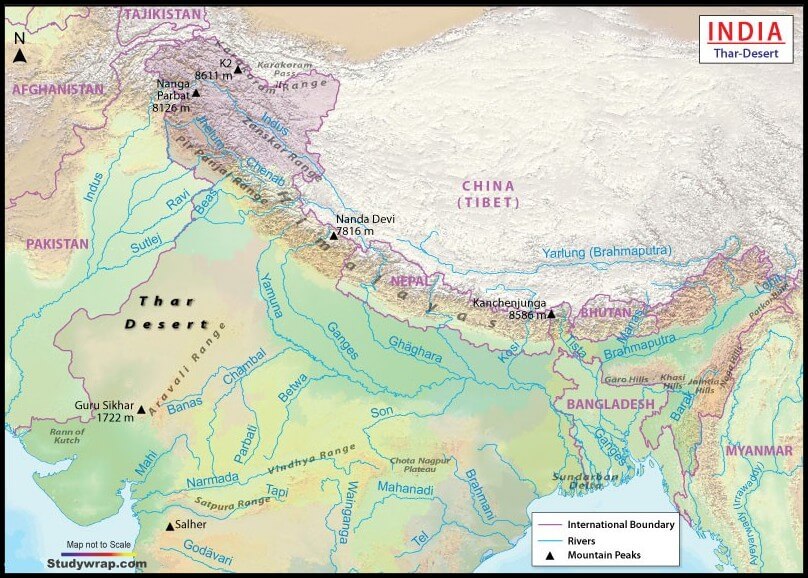Geography
The Indian Desert (Thar Desert of India)
The Indian Desert
- The Indian Desert Also known as Thar Desert or Great Indian Desert.
Location and extent of the Indian Desert
-
- To the north west of Aravalli hills.
- Covers western Rajasthan and extends to adjacent part of Pakistan.
Geological History And Features
-
- Most of the arid plain was under the sea from perma – Carboniferous period and later it was uplifted during Pleistocene age.
- This can be corroborated by the evidence of wood fossil parks at Aakal and marine deposits around Brahmasar near Jaisalmer. (Approx. age of wood fossil is estimated to be 180 million years).
- The presence of the dry bed of rivers Eg Saraswati indicates that the region was once fertile.
- Geologically, the desert area is part of peninsular plateau region but on surface it looks like aggradational plain.
Chief Characteristic of the Indian Desert
-
- The desert proper is called Marusthali (dead land) as the region has an arid climate with low vegetation cover. In general, the eastern part of desert is rocky and western part is covered by shifting sand dunes.
- Bangar – refers to semi-arid desert area which is west of Aravalli. Bangar has a thin layer of sand. It is drained by Luni River in the south whereas the norther section has a number of salt lakes.
- The Rajasthan Bangar region has numerous short seasonal streams which originated from Aravalli. These streams support agriculture in some fertile patches called ‘Rohi’.
- Even the most important river Luni is seasonal stream. The Luni originated in the Pushkar valley of Aravalli range, near Ajmer and flows toward the south west into Rann of Kuchchh.
- The region north to Luni is known as Thali or sandy plains.
- There are some streams which disappear after flowing for some times or distance and present a typical case of inland drainage by joining a lake or playa. Eg. The Sambhar Lake. The lake and the palayas have brackish water which is the main source of obtaining salt.
Well Pronounced Desert Land Features
-
- Sand Dunes
-
-
- It is a land of undulating topography dotted with longitudinal dunes, transverse dunes and barchans.
- Barchans are a Crescent shaped sand dunes, the horn of which are pointing away from the direction of dominating wind.
- Longitudinal dunes are those with the Crescent running parallel to direction of prevailing wind.
-
-
- Mushroom rocks
- Shifting sand dunes
- Oasis
That’s it for this post on the Desert of India which ends the series of the Physiological Divisions of India.
In the next post (Click here), we would start a new topic that is Drainage System of India.


best one i found crisp and to the point notes… Thanks
Nice Notes…. Want more notes on Geomorphology… can you provide me in my email..??